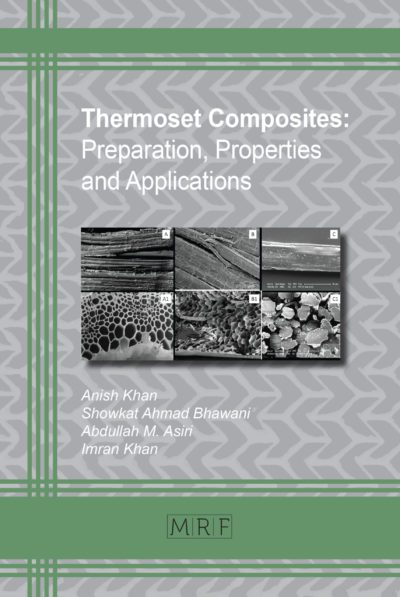–
Impact of machining strategy on OFE copper for SRF applications
BELKHIR F., KOLENIC M., RECH J., PÉREZ FONTENLA A. T., ROSAZ G., MOROS A., GARLASCHÈ M., LEITH S., NAISSON P., CARLOS C.P.A.
download PDFAbstract. The study evaluates the impact of various milling strategies – on the surface and subsurface quality of an Oxygen-Free Electronic (OFE) copper substrate, and subsequently on the niobium (Nb) coating performance- for Superconducting Radio Frequency (SRF) cavities. Several cutting tools, cutting conditions and machining paths are compared, given their paramount influence in the final ‘SRF’ quality of the machined surfaces. The near surface region is evaluated by different means: surface roughness and shape accuracy are measured using a profilometer and Coordinate Measuring Machine (CMM) respectively; the thickness of the layer affected by machining on the OFE copper substrate is estimated by Focused Ion Beam Scanning Electron Microscopy (FIB – SEM). The dislocation density in the near surface layer is assessed by Grazing Incidence X-Ray Diffraction (GI-XRD) in both the OFE copper substrate and afterwards in the niobium coating. Main investigation results are discussed, and conclusions drawn for new guidelines on machining strategy and for future research developments.
Keywords
Surface Integrity, Machining, SRF, Cavity, OFE Copper, Niobium, SEM, FIB, GIXRD, FCC
Published online 4/24/2024, 10 pages
Copyright © 2024 by the author(s)
Published under license by Materials Research Forum LLC., Millersville PA, USA
Citation: BELKHIR F., KOLENIC M., RECH J., PÉREZ FONTENLA A. T., ROSAZ G., MOROS A., GARLASCHÈ M., LEITH S., NAISSON P., CARLOS C.P.A., Impact of machining strategy on OFE copper for SRF applications, Materials Research Proceedings, Vol. 41, pp 1945-1954, 2024
DOI: https://doi.org/10.21741/9781644903131-215
The article was published as article 215 of the book Material Forming
![]() Content from this work may be used under the terms of the Creative Commons Attribution 3.0 license. Any further distribution of this work must maintain attribution to the author(s) and the title of the work, journal citation and DOI.
Content from this work may be used under the terms of the Creative Commons Attribution 3.0 license. Any further distribution of this work must maintain attribution to the author(s) and the title of the work, journal citation and DOI.
References
[1] C. P. A. Carlos et al., Nb/Cu thin film HiPIMS coatings optimization for SRF applications, FCC Week 2022, Paris, France, 30 May – 03 June 2022.
[2] A. Camelin et al. Experimental analysis of subsurface integrity during fine turning of OFE copper for radiofrequency cavity manufacturing. Journal of Materials Processing Technology. 302. (2021) 117483. https://doi.org/10.1016/j.jmatprotec.2021.117483
[3] A. Plaçais et al., Multipactor studies for the FCC–ee superconducting SWELL cavities, (2023).
[4] M. Benedikt et al., Future Circular Collider – European Strategy Update Documents, (2019).
[5] I. Perez et al., Effect of cutting speed on the surface integrity of face milled 7050-T7451 aluminium workpieces. Procedia CIRP. 71 (2018) 460-465. https://doi.org/10.1016/j.procir.2018.05.034
[6] K. Gutzeit et al., Influence of the cutting-edge radius on tool wear during cryogenic machining with cemented carbide end mills. (2022).
[7] L. Denguir, José Outeiro, Guillaume Fromentin, Vincent Vignal, Rémy Besnard: Influence of cutting process mechanics on surface integrity and electrochemical behavior of OFHC copper. Procedia CIRP 13 (2014) 186 – 191. https://doi.org/10.1016/j.procir.2014.04.032
[8] J. P. Davim et al: Machining, edition Springer, Department of Mechanical Engineering, University of Aveiro, Aveiro, Portugal. (2008).
[9] Y. Zenchao, X. Yang, L. Yan, X. Jin, W. Quandai: The effect of milling parameters on surface integrity in high-speed milling of ultrahigh strength steel. Procedia CIRP 71 (2018) 83–88. https://doi.org/10.1016/j.procir.2018.05.076
[10] M. Arzeo et al., Enhanced radio-frequency performance of niobium films on copper substrates deposited by high power impulse magnetron sputtering. Supercond. Sci. Technol. 35 (2022) 054008. https://doi.org/10.1088/1361-6668/ac5646
[11] G.Rosaz et al., Niobium thin film thickness profile tailoring on complex shape substrates using unbalanced biased High Power Impulse Magnetron Sputtering, Surf. Coat. Technol. 436 (2022) 128306. https://doi.org/10.1016/j.surfcoat.2022.128306
[12] L. Lutterotti et al., A friendly java program for material analysis using diffraction.(1999).
[13] A. Saillet et al., Evaluation of computer-aided manufacturing software accuracy for high precision machining, euspen’s 20th International Conference & Exhibition, Geneva, CH, June 2020.
[14] J. Ma, University of Waikato, New Zealand: Investigation on the interface structure and thermal conductivity of hot-forged Cu/ (Ti/W-coated)-diamond composites. (2020).
[15] J. E. Graebner : Thermal Conductivity of Diamond. In : Pan, L.S., Kania, D.R. (eds) Diamond : Electronic Properties and Applications, ( 1995)285-318, editor : Springer. https://doi.org/10.1007/978-1-4615-2257-7_7
[16] S. Breumier et al., High strain rate micro-compression for crystal plasticity constitutive law parameters identification. (2021). https://doi.org/10.1016/j.matdes.2020.108789













